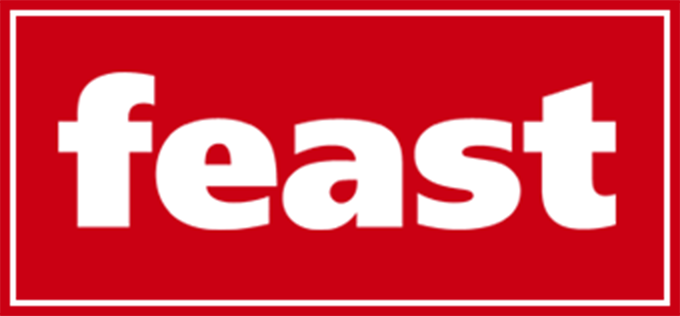Dior remains one of the world’s most coveted luxury brands. In 2024, its brand value hit about $12 billion, and early 2025 reports show the Maison sustaining “creative momentum” in leather goods — think the new Dior Toujours and D-Journey bags launching strongly. Such enduring appeal means high demand, but the market is also full of resales and fakes.
Globally, the second-hand luxury market is booming; it’s expected to grow from about $35 billion in 2024 to $38 billion in 2025, and Dior pieces are a big part of that circular fashion trend. At the same time, young shoppers have embraced “dupe” culture, often flaunting designer knockoffs.
Given this, you need to buy Dior smartly. Ask the right questions to ensure you truly get what you pay for. In the sections below, we’ll walk through the five key questions — authenticity, seller reputation, price, returns, and future value — so you can shop confidently for authentic Dior in 2025.

1. Is the Dior Item 100% Authentic?
Authenticity is everything with luxury. A genuine Dior item can cost thousands, so fakes are unfortunately common. Always check for tell-tale “real vs fake” markers: examine the stitching (authentic Dior has perfectly even, tight stitches), logo, and hardware (the “Christian Dior Paris” stamp should be crisp and centred), the date/serial code, and any authenticity cards or dust bags.
For total confidence, consider a professional Dior authenticity check. Services like LegitGrails offer expert verifications — combining AI and human examiners — with over 99% accuracy. For example, LegitGrails’ hybrid authentication compares your item’s photos against a vast database, then has experts review every detail. If you’re ever in doubt, such a service can certify your Dior’s legitimacy.
In short, if you think it might be fake, get it checked. An authenticated Dior is worth every penny; a counterfeit is money wasted.
2. Does the Seller Have a Verified Reputation?
Who you buy from can be as important as what you buy. Stick to reputable sellers — think official Dior boutiques, trusted luxury resellers, or well-known online platforms. Sites like TheRealReal, Grailed, or eBay (with its Authenticity Guarantee program) can offer extra protection.
For example, eBay’s programme inspects eligible Dior items through experts before delivery. Even Instagram boutiques or second-hand shops can be OK if they have a track record, but always vet them carefully.
Try to find seller verification badges, clear return policies, and a lot of positive feedback. Safe platforms will also indicate buyer protection or money-back guarantees in case of any issues.
In the end, trust your gut. If you get a strange vibe from the seller — for example, if they are hesitant to answer your questions, do not accept returns, or pretend that they have “secret” stock — you should look for a more transparent seller.
3. Are You Paying a Fair Price?
Dior prices can vary a lot depending on the model, condition, year, and rarity. Prior to purchasing a deal, it is advisable to cross-check multiple sources to gain an understanding of the market prices. You may find selling prices for Dior bags, shoes, and accessories on online marketplaces like StockX or luxury consignment sites. (Dior saddles and Lady Dior classics are usually on the high side regarding secondhand prices.)
Forums and community groups can also inform you about current market values. Do not chase bargains that look too good to be true—they will probably be low-priced but could be fakes or scams.
Always compare at least three listings before buying. That way, you’ll know the going rate and spot outliers. If one seller is way below everyone else, investigate why. Sometimes minor differences (colour, size, seller location) explain price gaps, but not always legitimately.
Use price knowledge as negotiation leverage or a deal-breaker. By paying a fair (or slightly below-market) price, you protect yourself against overpaying for a scam item.
4. What’s the Return or Refund Policy?
Luxury purchases have risks, especially when buying online or secondhand. Before buying, make sure you understand the seller’s refund rules. Some boutiques or platforms offer straightforward returns, but many private sellers or resellers may sell “as is.”
Use payment methods that offer buyer protection (credit card, PayPal, goods purchase) whenever possible. They can help you get your money back if the item isn’t as promised. Also, consider requesting a small “conditional offer” for verification: some buyers send a deposit first, and the rest after confirming authenticity.
In short, always clarify refunds or returns upfront. No-return luxury buys are like final sales: you trust the seller completely.

5. Will the Piece Hold Its Value Over Time?
If you’re treating a Dior purchase as an investment (or just want to feel smarter about your splurge), consider future resale value. Many Dior products, especially iconic bags and limited editions, retain their worth to a great extent.
For instance, the most popular Lady Dior, which is considered a safe bet, has increased its resale value, according to Vogue. Special or rare editions have benefited most from the trend, partially due to their royal heritage.
Similarly, the resurrected 1990s Dior Saddle Bag is also at the top of fashion investment studies. According to one study, the resale price of a saddle (around $3.5k) far exceeded the $1.1k launch price.
Among the factors that have an impact on the price are:
- Condition: A perfect item (box, dustbag, and no signs of wear) will sell much faster than a scuffed or dirty one.
- Rarity and editions: Limited-run or discontinued Dior pieces skyrocket in popularity quickly. The Saddle Bag, Lady Dior (especially mini versions), and certain Dior Book Totes are extremely hot items.
- Design longevity: Classic shapes (quilted, structured bags) usually resist trends, while trendy or avant-garde clothing might be more of a gamble. One industry analyst justifies this by saying heritage and limited production are the most significant factors driving value.
- Market demand: Keep an eye on who is “hot.” Social media fads and influencers’ product usage can cause resale prices to soar instantly.
We’ve already seen Dior prove to be a strong performer in the resale market. An industry report even puts several Dior styles among the top luxury investments. However, fashion can fluctuate, so if resale is a priority, aim for the most iconic, well-preserved items.
Buy Authentic. Buy Smart. Buy Dior.
To sum up, you need to be organised to extract the maximum value from your Dior purchase in 2025. Learn more: be familiar with the market value, check the product’s authenticity, and transact with reputable sellers. By doing so, you ensure your wallet’s safety and add the perfect blend of authentic Dior craft to your wardrobe.
Carrying these five questions with you and implementing the expert tips allows you to shop doubly confidently and stylishly, whether you are searching for a timeless Lady Dior or the most recent Dior product. Have fun with your luxury shopping, and don’t forget: smart buyers put their money into real products.


